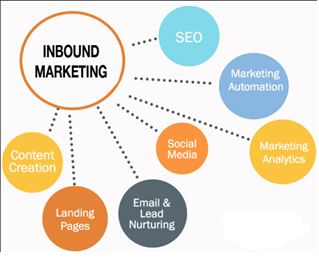Now that you are beginning to understand the type of systems and content to place on your website, it is time to explain the processes of guiding your prospective customers down the sales funnel. Certain types and styles of content posts are meant to attract, others are meant to covert and, even others are created to give the prospect a final push and close the sale. The process is to slowly influence a potential customer of yours with content posts as they proceed to move down the funnel. This is not an exact science. When a potential buyer is already moving through the funnel, one untimely content post can cause them to climb back up and you can lose out on the opportunity to bring them “IN”. You must bring the customer “IN” and through the sales funnel to be successful at inbound marketing. The purpose is to guide your potential customers through the buyer’s process with your content.
Inbound marketing as a process is not just about drawing traffic to your website. It is also about managing the experience of the visitor to the website when they arrive. So the goal is not only to put keyword specific content on the website to help you get found, but to also provide content that is interesting or engaging to the visitor and guiding them through the buying process throughout the sales cycle. Inbound marketing protocol is to segment content for visitors that are at the top of the funnel, middle of the funnel and the bottom of the funnel.




